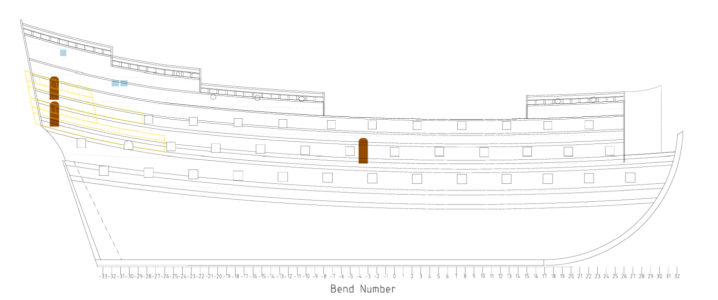- Joined
- Sep 17, 2023
- Messages
- 29
- Points
- 48

thanks ratty,i really appreciate the feed back , the SOS is so full of mysteries ...love it
 |
As a way to introduce our brass coins to the community, we will raffle off a free coin during the month of August. Follow link ABOVE for instructions for entering. |
 |


Do you have the rest of the van de Velde drawing at that scale? I'm looking for that image in high resolution for decoration research.Hi Barry;
Just to help with understanding the difference, here is a part of Van de Velde's drawing, which I believe was possibly made in 1660, and a part of Payne's engraving, showing the ladder mentioned. There is obviously quite a bit of difference between the two.
Ratty
View attachment 496252
View attachment 496253

Is a high resolution image available for sale from the owner? How does one obtain such an image for research "legally?"Hi Kurt;
I regret that I am not able to share any further images of the drawing. At this resolution I have a series of partial images. The whole image is of lesser quality.
I obtained these perfectly legally, but due to them being required for another project, I am not currently able to distribute any images.
Sorry for the disappointment.
Ratty






Tis one mystery to think about, but in honesty, I wonder if they really spent much time looking at the real ship?Hi Maarten;
This is unlikely, as what Charlie calls the Pett Portrait quite clearly shows that the hancing pieces to the aft of the waist are Mars with his shield and sword on the starboard side, and Neptune on the port side.
Payne's engraving has Neptune on the port side, and not Mars. If it was a reversed image, he would show Mars.
See below for Neptune and Mars.
Ratty
View attachment 481735

Hi tball;Tis one mystery to think about, but in honesty, I wonder if they really spent much time looking at the real ship?
The entry port would have to have been built into the hull from the start, how many ribs would have to have been altered to fit it in after launch? Is there any record of the SotS being dry docked for installation of the door?
Perhaps its just like the mystery of "why cant I find a binnacle on any ships plans"?

Hi tball;Does anyone else consider the following:
1. the Elizabethan era did not have the full technology to build "super ships" like the Revenge very well.
2. The treasury of Elizabeth was not known, in all period documentation as being "full of wealth" needed to build huge ships or many of them.
3. The pure cost of building big ships was bad for Elizabeth. it was better to spend the 4,000$ needed to build Revenge to built 2-3 smaller ships.
4. The cost of Sovereign easily represents the cost to build an entire fleet?
